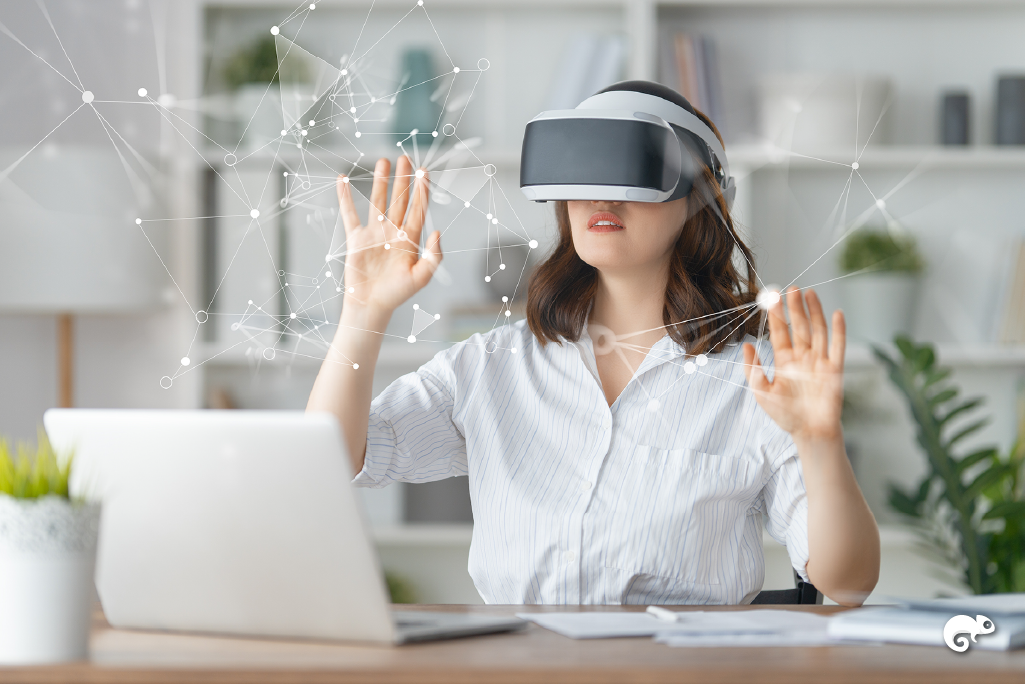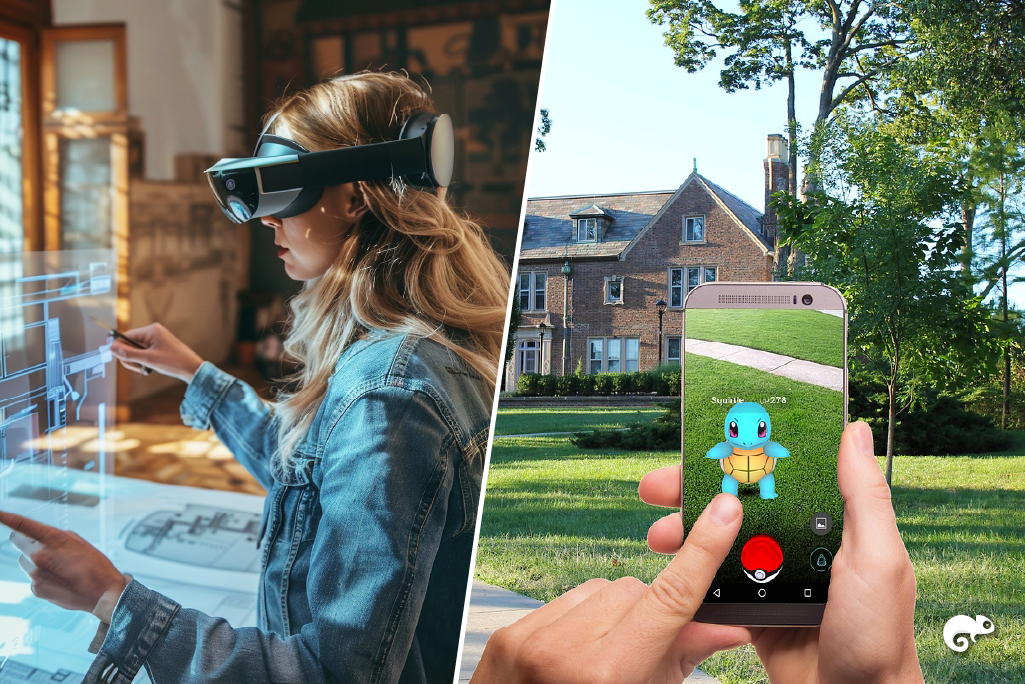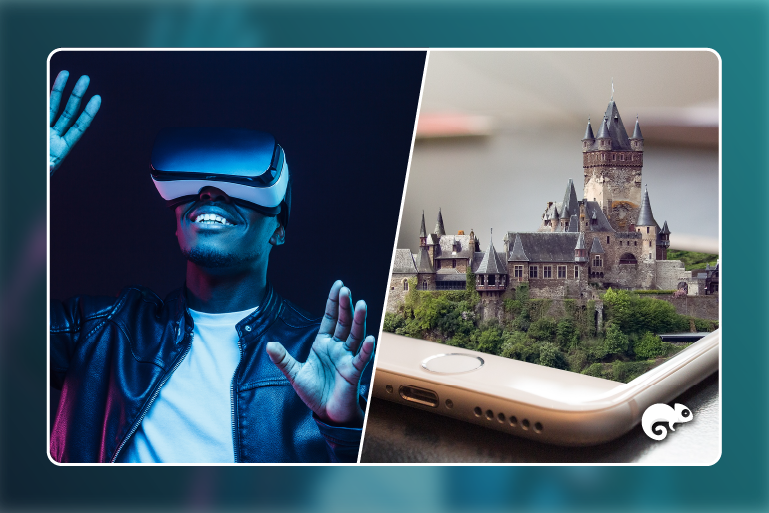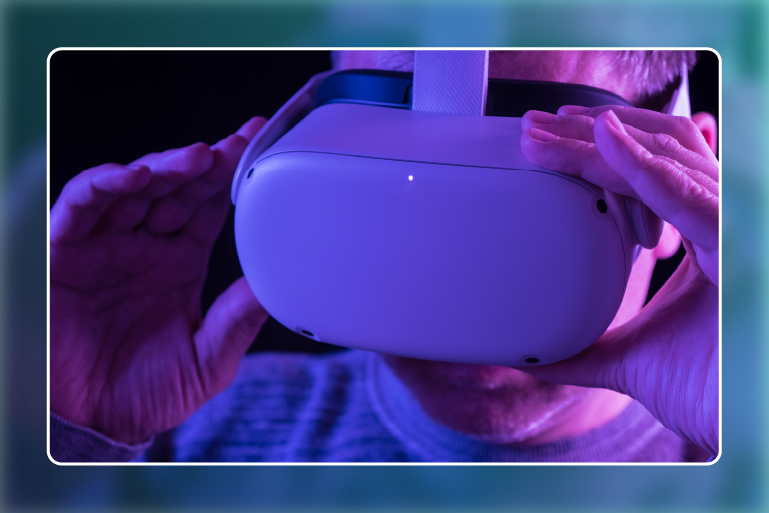Over the last decade, we have witnessed technological advances that are revolutionizing how businesses connect with their audiences and generate value. Two of the most innovative tools are Virtual Reality (VR) and Augmented Reality (AR). Although they are often mentioned together and can cause confusion, each offers unique experiences and specific solutions that can transform your sales and communication strategies.
In this article, we will help you understand the key differences between these technologies, explore their practical applications, and show you how to choose the one that best suits your goals. Discover how virtual reality and augmented reality can provide the boost you need to enhance user experiences and achieve your business objectives.
What is Virtual Reality (VR)?

Virtual Reality (VR) is a technology that creates three-dimensional (3D) digital environments designed to fully immerse the user in an interactive experience. Through devices such as VR headsets, haptic gloves, and other gadgets, users can explore and experience virtual environments that feel real but are computer-generated.
This technology has found applications across various industries, from architecture and tourism to museums and real estate, enabling users to tour and experience spaces as if they were physically present. For example, at Perspektiva 360, we use VR to develop immersive experiences that help businesses better communicate their projects and capture customer interest.
The growth of this technology is remarkable: according to Statista, the global Virtual Reality market will exceed $30 billion by 2025, reflecting its increasing adoption and the interest of brands in leveraging its potential.
How Does Virtual Reality Work?
Virtual Reality combines hardware and software to deliver immersive experiences. VR headsets, known as HMD (Head-Mounted Displays), play a central role: their screens display computer-generated 3D images, which adjust in real-time based on the user’s head and body movements.
This system creates the illusion of being inside the virtual environment, fully immersing the user in the experience. Additionally, VR can include motion controllers and sensors that track the user’s movements, allowing for natural and seamless interaction with the virtual world.
If you want to learn more about this technology, we invite you to read our article “Complete Guide to Virtual Reality,” where we explore its definition, applications, and how it can transform the way we interact with the digital world.
What is Augmented Reality (AR)?

Augmented Reality (AR) is a technology that combines the physical world with digital elements, providing an enriched and interactive experience. Unlike virtual reality, augmented reality does not create a completely new environment but enhances the existing one by overlaying graphic information, sounds, or other computer-generated data.
A common example of augmented reality can be found in filters used by applications like Instagram and Snapchat, as well as games like Pokémon Go or Jurassic World Alive. These applications use the cameras and sensors of mobile devices to add virtual elements to what you’re viewing in real time, such as characters, effects, or additional information.
This technology is widely used across various sectors, from entertainment and education to tourism and commerce. For instance, in tourism, some applications allow users to take photos at iconic sites with virtual elements added, like spaceships or animated characters, making the experience more immersive and enjoyable.
How Does Augmented Reality Work?
Augmented reality combines hardware and software to seamlessly integrate digital elements into the real world. It starts with the device’s camera, such as a mobile phone, tablet, or specialized glasses, which captures the physical environment surrounding the user.
The augmented reality software processes this information in real-time, identifying surfaces, objects, or patterns in the environment. Using this data, it generates and overlays virtual elements, such as graphics, text, or animations, onto the captured scene.
What’s even more impressive is that this integration is not just visual—it can also be interactive. Users can manipulate digital objects, rotate them, resize them, or even interact with them using gestures, screen taps, or voice commands.
This technology relies on tools like motion sensors, GPS, and advanced image processing algorithms, ensuring that virtual elements are precisely and coherently placed within the physical world.
Virtual Reality vs. Augmented Reality: What Are Their Differences?

Virtual Reality (VR) and Augmented Reality (AR) are innovative technologies, but their approaches and functionalities differ significantly. The following table summarizes their main characteristics to help you understand their unique features.
| Aspect | Augmented Reality (AR) | Virtual Reality (VR) |
|---|---|---|
| How it works | Enhances the physical environment with digital elements projected through a device. | Immerses the user in a fully computer-generated digital environment. |
| Required equipment | Can be experienced using common devices like smartphones or tablets, as well as AR glasses. | Requires specialized devices such as VR headsets and motion controllers. |
| User interaction | Allows interaction with the real world and overlaid digital elements. | Offers interaction only within the generated virtual environment. |
| Economic accessibility | More accessible, as many people have AR-compatible devices. | Higher cost due to the advanced equipment required. |
| Common uses | Marketing, education, gaming, tourism, commerce, and cultural activities, among others. | Immersive video games, simulations, 3D design, therapy, and specialized training. |
| Shared experiences | Users can have collective experiences in the same physical space. | Experiences are usually individual and not shared in a common physical space. |
| Comfortable usage duration | Can be used for long periods without significant discomfort. | Prolonged use may cause dizziness or visual fatigue in some cases. |
| Environment requirements | Requires a well-lit space so cameras can accurately interpret the physical environment. | Needs a clear area to ensure the user’s safety while exploring the virtual environment. |
| Degree of immersion | Provides a partial experience that combines digital elements with the real world. | Offers total immersion, isolating the user from the physical environment. |
| Ease of adoption | Easy to use, as it relies on interaction with real-world elements. | Requires some adaptation, especially for beginners in complex digital environments. |
Where Do Virtual Reality and Augmented Reality Shine?
These technologies have found outstanding applications across various sectors, but their selection depends on the goals and needs of each industry. Here’s how they are transforming key fields:
Healthcare and Medicine
Virtual Reality is used in therapies to treat phobias, surgical simulations, rehabilitation, and remote medical care. Meanwhile, Augmented Reality enhances diagnostic precision and assists in surgical procedures.
Tourism
Both VR and AR have revolutionized tourism by allowing users to explore destinations and attractions from anywhere in the world. This aids in travel planning and creates more immersive and engaging experiences for visitors.
Architecture and Real Estate
These technologies offer a new way to visualize architectural projects and real estate properties. They allow clients to tour and experience properties before they are built, speeding up decision-making and reducing uncertainties.
Education and Professional Training
VR and AR have transformed learning by enabling interactive experiences that improve retention and understanding of complex topics. From VR simulators to AR tools, students and professionals can practice in controlled and realistic environments.
Marketing and Advertising
Brands are leveraging these technologies to create immersive campaigns that capture public attention. VR or AR brand activations let users interact with products and services in innovative ways, creating memorable experiences.
Although Virtual Reality and Augmented Reality have distinct approaches, they can also complement each other depending on the needs of a project. Their versatility allows organizations to use them to achieve specific goals or combine both to create unique and memorable experiences.
Virtual Reality and Augmented Reality have proven to be key technologies in digital transformation, revolutionizing how we interact with the physical and digital worlds. As explored, these tools are driving significant changes in industries such as education, healthcare, tourism, and marketing, offering immersive experiences and innovative solutions to address today’s challenges.








